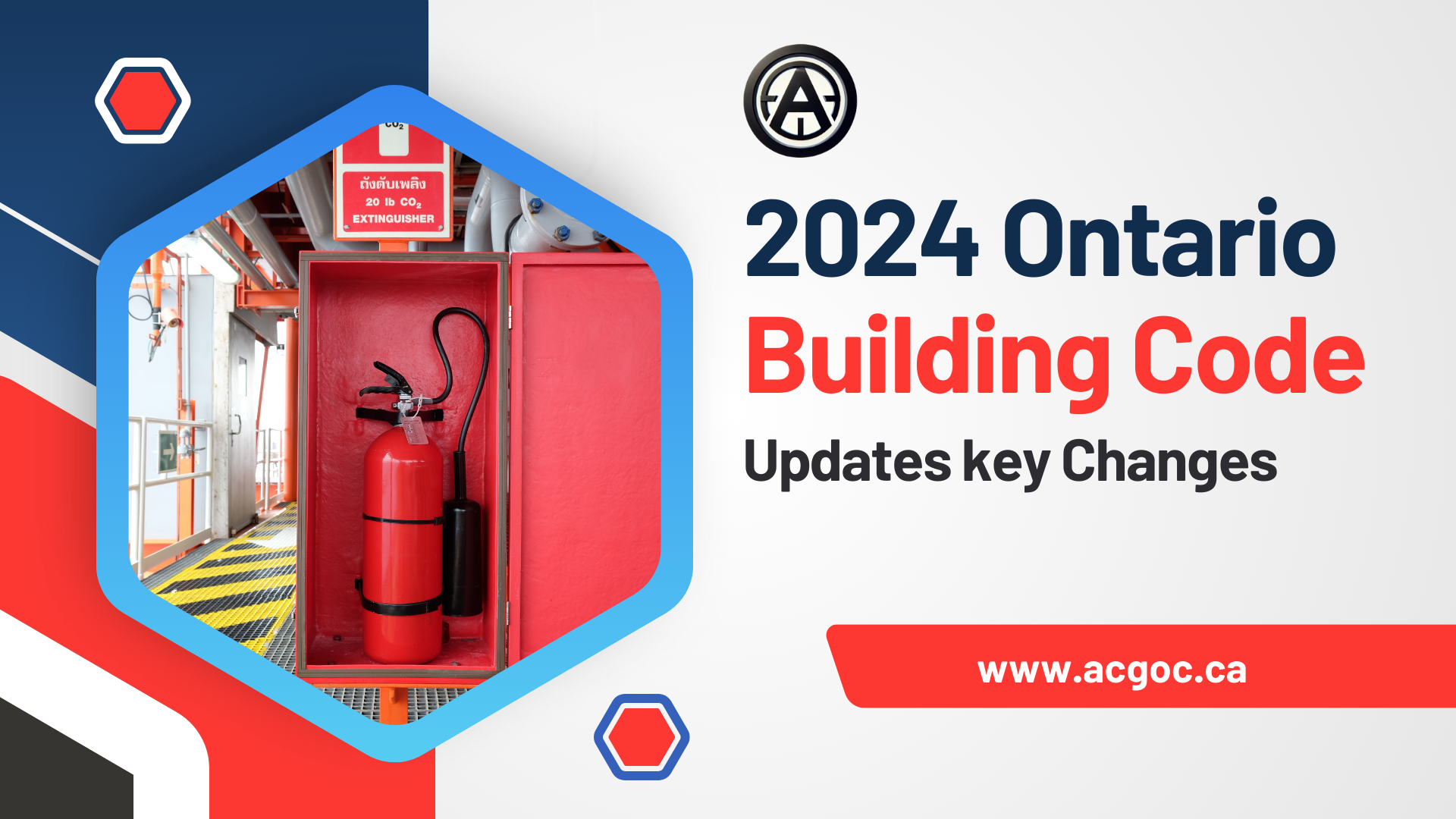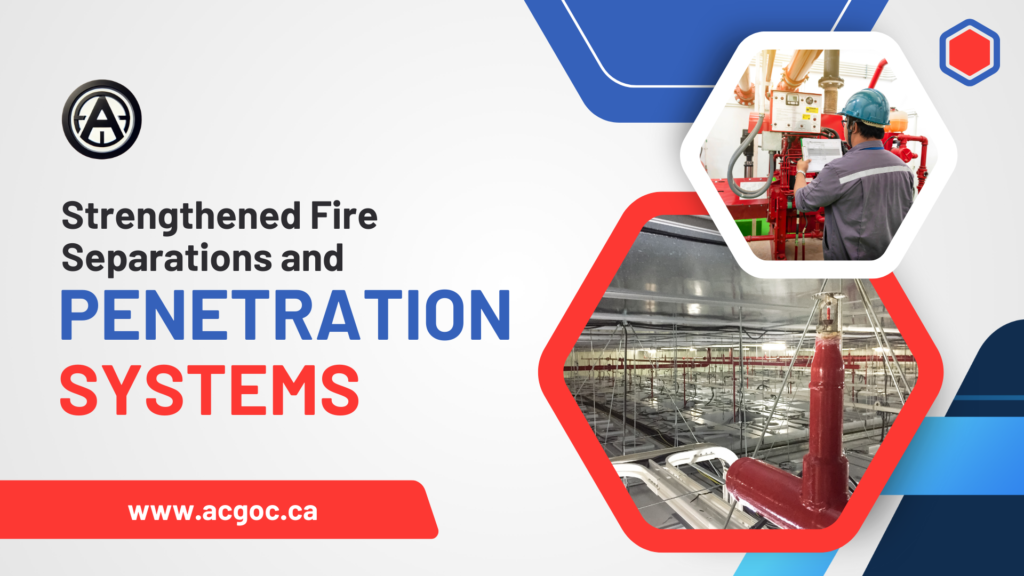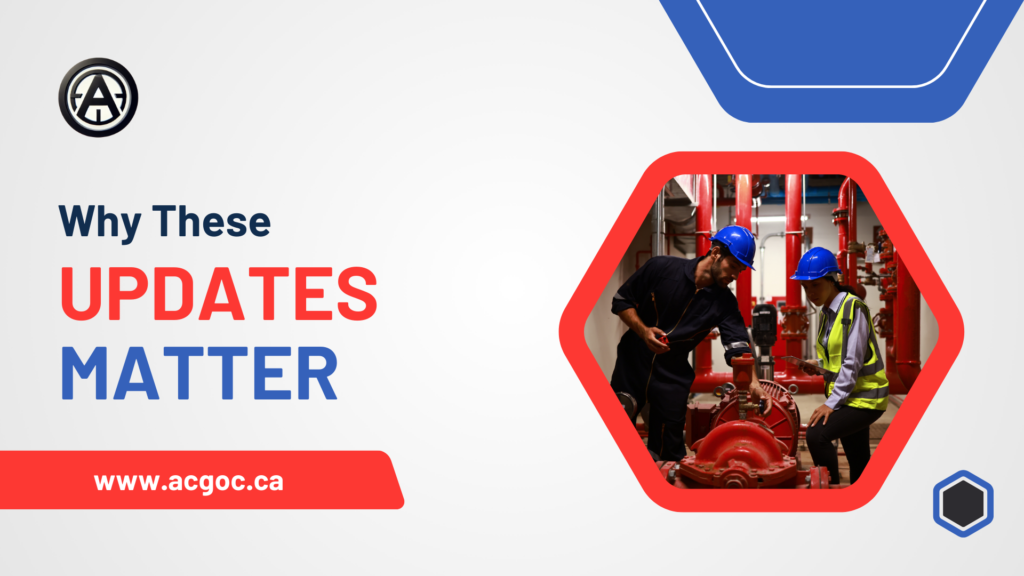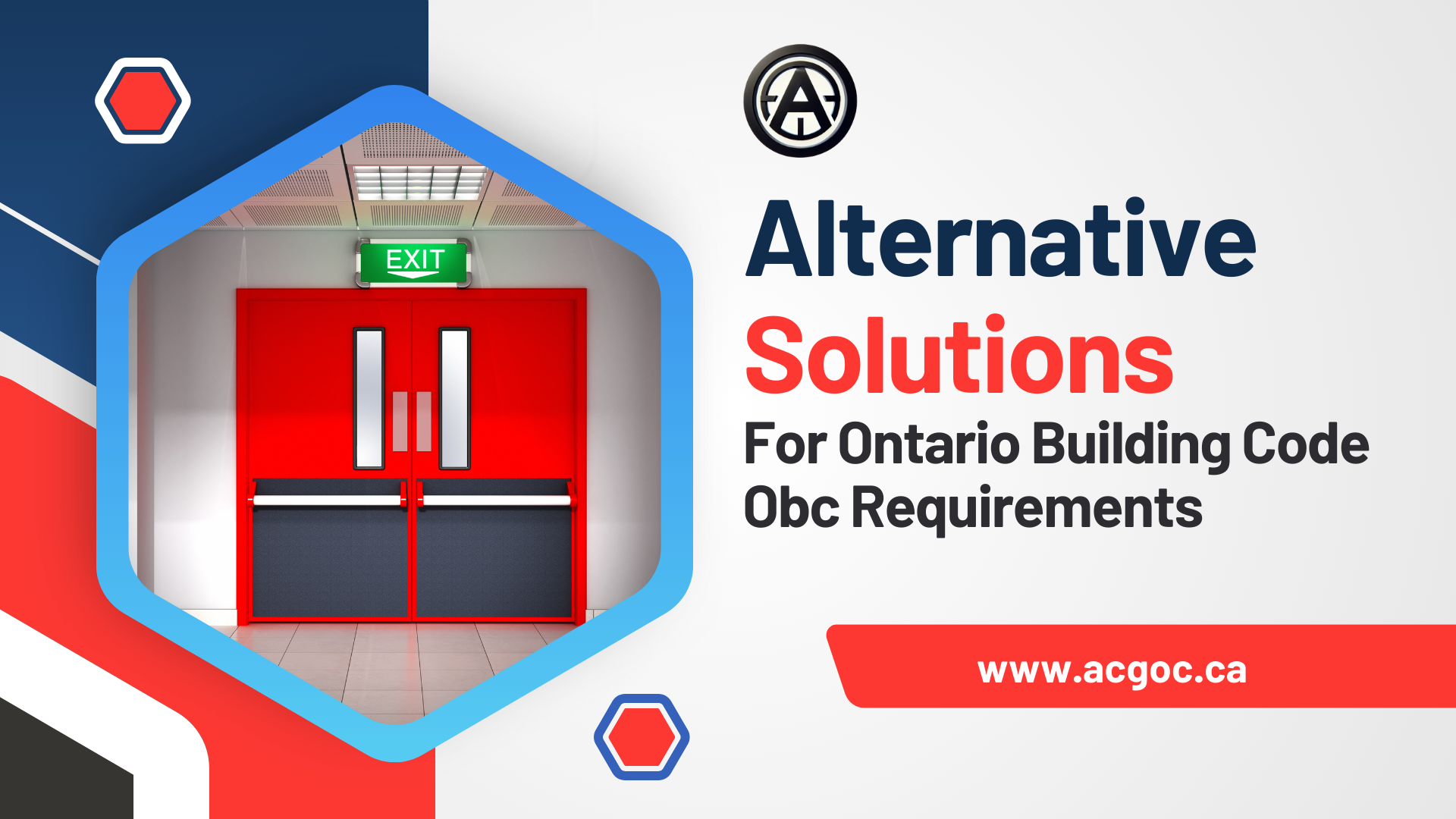10 Innovative Ways to Ensure Fire Safety in Modern Architectural Designs in Canada
How Safe is Your Home or Office from Fire? The Need for Modern Fire Safety Solutions in Architectural Design
In recent years, Canada’s architectural landscape has seen a dramatic shift toward modern, open-concept designs, innovative materials, and energy-efficient structures. While these trends have resulted in more visually stunning and functional buildings, they have also introduced new challenges for fire safety. The traditional fire safety solutions used in older buildings are no longer sufficient to meet the demands of modern construction, especially in the vast and varied urban environments of cities like Toronto, Ottawa, Vancouver, and Montreal.
As urban areas expand and the use of unique materials and open-concept layouts grows, it becomes increasingly important to integrate fire safety solutions that can match the scale and complexity of these modern designs. Fortunately, innovative technologies and engineering methods are emerging, offering creative ways to ensure fire safety without compromising aesthetics or functionality.
In this article, we’ll explore 10 innovative ways to ensure fire safety in modern architecture, especially focusing on Canadian cities like Ontario’s bustling urban centers. Additionally, we’ll highlight how advanced solutions from companies like ACGOC Ai Integrated Systems Inc. are transforming fire safety across the country.
1. Smart Fire Detection Systems: Harnessing the Power of AI
Open-concept homes and offices are aesthetically appealing, but they come with significant challenges in terms of fire safety. Traditional smoke detectors are often not sufficient in large, open spaces where fire can spread quickly before being detected. However, smart fire detection systems, powered by AI, have emerged as a game-changer in modern fire safety.
These systems are integrated into a building’s smart infrastructure and use sensors, machine learning, and cloud-based technology to detect fire and smoke in real-time. When smoke or heat is detected, the system not only alerts the building’s occupants but can also automatically notify emergency services, streamlining the response time. In open-concept spaces, where detection may be delayed due to the lack of physical barriers, these AI systems provide continuous monitoring and quick identification of hazards.
For example, ACGOC Ai Integrated Systems Inc. offers advanced fire detection solutions that integrate with smart home devices, enhancing safety by providing real-time data on the fire’s location and intensity. This can help building managers in Ontario and across Canada take swift action before the fire escalates.
Code Reference: In Canada, the Ontario Building Code (OBC) and National Building Code (NBC) set standards for fire alarm systems in large buildings. These systems must be interconnected and provide continuous monitoring to ensure safety, especially in large, open-concept spaces.
2. Fire-Resistant Building Materials: A Strong Defense Against Fire Spread
One of the most effective ways to enhance fire safety is to use fire-resistant materials in construction. In modern architecture, where large windows, glass facades, and open floor plans are common, fire-resistant materials can be key in preventing the spread of flames and smoke.
Innovative materials such as fire-rated glass, fire-resistant insulation, concrete, and steel are now being used to improve the fire resistance of modern buildings. For example, fire-resistant glass can be used for windows and doors in residential and commercial buildings without sacrificing natural light and visual appeal. Similarly, modern fireproof coatings can be applied to structural steel to improve its fire resistance.
In cities like Toronto and Ottawa, where high-rise buildings are abundant, these materials are increasingly being specified for use in building facades, particularly in urban areas where buildings are tightly packed together. The use of fire-resistant materials in commercial buildings can also help reduce overall building insurance costs, making it a cost-effective solution in the long run.
Code Reference: According to CAN/ULC S101 (fire-resistance testing) and ASTM E119, materials used in buildings must meet fire-resistance ratings that align with fire safety standards in both the Ontario Building Code (OBC) and the National Building Code (NBC).
3. Automated Fire Suppression Systems: Quickly Contain Fires Before They Spread
Fire suppression systems like sprinklers have been a standard in fire safety for decades, but the next generation of suppression systems is far more advanced. Automated fire suppression systems are now designed to activate the moment they detect smoke or heat, delivering targeted suppression to the affected areas. These systems are more precise and efficient, using water mist or gaseous agents to control fire spread without causing unnecessary water damage.
In large open spaces, automated fire suppression is especially important, as traditional methods like manually operated fire extinguishers are not always effective or timely enough. ACGOC Ai Integrated Systems Inc. offers integrated solutions that automatically trigger suppression systems, based on data from connected fire detection systems. The AI technology ensures that the response is tailored to the size, type, and location of the fire, minimizing damage and preventing fire from spreading.
Code Reference: The Ontario Building Code and National Building Code require the installation of fire suppression systems in certain building types, especially high-rise buildings, office complexes, and industrial spaces.
4. Fire Doors with Smart Locks: Automatically Seal Off Dangerous Areas
The purpose of fire doors is to contain the spread of fire and smoke within a building. However, modern fire doors are now being equipped with smart locks and automated mechanisms that improve their efficiency. These fire doors can be integrated into a building’s fire safety system to automatically close when a fire is detected, or when a smoke detector is triggered.
The smart locking mechanisms allow the doors to be remotely controlled, providing building managers and emergency personnel with more flexibility and control over the building’s fire safety systems. For example, in high-rise buildings or open-concept spaces, it is essential that fire doors can be closed automatically to compartmentalize fire and prevent it from spreading.
Code Reference: According to the Ontario Building Code (OBC), fire doors must be self-closing and self-latching, and must meet the fire-resistance standards outlined by UL 10C.
5. Zoned Fire Safety Solutions for Open Spaces
Open-concept layouts have become a hallmark of modern architecture, but they also present challenges in containing fire. With large, uninterrupted spaces, a fire can spread quickly without fire-resistant barriers. One solution is zoned fire safety, where fire safety measures are tailored to different sections of the building based on the specific risks present in each area.
In this approach, fire safety systems are divided into “zones,” and fire detection and suppression methods are applied accordingly. For example, kitchens, which are higher-risk areas due to cooking activities, may have different fire suppression methods compared to living rooms or office spaces.
AI-powered solutions, such as those offered by ACGOC Ai Integrated Systems Inc., can continuously monitor different zones of a building and activate appropriate fire safety measures in response to real-time conditions. These systems provide a more targeted approach to fire prevention, ensuring that each area of the building is adequately protected.
Code Reference: The Ontario Fire Code (OFC) and National Fire Code of Canada (NFCC) emphasize the importance of fire zoning in larger commercial and residential buildings, ensuring that fire protection systems are customized to different areas based on risk factors.
6. Smoke Control Systems: Safeguarding Occupants in Large Spaces
In large, open-concept buildings with high ceilings, smoke can rapidly fill the space in the event of a fire. Smoke control systems are crucial in these environments, as they prevent smoke from spreading throughout the building, providing building occupants with a safer environment and more time to evacuate.
These systems use a combination of ventilation fans, air dampers, and exhaust systems to control the movement of smoke. In modern, high-rise buildings in Toronto and Vancouver, these systems are critical for maintaining air quality and safety, particularly in the event of a fire in a building’s atrium or lobby.
Code Reference: The National Building Code (NBC) and Ontario Building Code (OBC) mandate smoke control measures for high-rise buildings, ensuring that smoke can be contained and directed safely in case of a fire.
7. AI-Based Emergency Evacuation Systems: Real-Time Decision-Making for Safer Exits
During a fire emergency, the ability to evacuate quickly and safely is critical. However, traditional emergency evacuation systems often lack the flexibility to adapt to real-time conditions. With AI-based emergency evacuation systems, buildings can now provide dynamic evacuation plans that adjust based on real-time data such as fire location, building occupancy, and smoke movement.
These systems can guide occupants to the safest exits and even adjust the flow of people based on changing conditions. In large buildings or open-concept designs, these systems can optimize evacuation routes, minimizing confusion and reducing the risk of bottlenecks.
Code Reference: The Ontario Fire Code and National Building Code require that emergency evacuation plans be regularly tested and updated, ensuring they account for all possible emergency scenarios.
8. Fire-Resistant Facades: Aesthetic and Functional Fire Protection
Fire-resistant facades are a critical component of high-rise buildings, particularly in urban areas like Toronto, where buildings are densely packed. These facades can significantly reduce the spread of fire between floors or from one building to another. Using materials like fire-resistant cladding, concrete, or fire-rated glass, these facades provide an added layer of protection, even in the face of intense flames.
These fire-resistant facades also contribute to a building’s aesthetic appeal, offering visually pleasing designs without compromising on safety.
Code Reference: Both the Ontario Building Code (OBC) and the National Building Code (NBC) specify the use of fire-resistant materials for building facades in high-rise and commercial buildings.
9. Fire-Safe Landscaping: Protecting the Perimeter of Your Property
In cities and communities with substantial greenery, fire-safe landscaping can act as a buffer against the spread of fire from outside the building. Strategic placement of fire-resistant plants, non-combustible fences, and defensible spaces around the perimeter of the property can reduce the likelihood of wildfires or fires from adjacent properties spreading to your building.
While this may seem more relevant to suburban or rural areas, urban environments in places like Vancouver or Calgary can benefit from fire-safe landscaping to reduce the overall fire risk.
Code Reference: While fire-safe landscaping is not directly covered under the Ontario Building Code or National Building Code, it is increasingly a component of municipal fire prevention strategies in fire-prone areas.
10. Ongoing Fire Safety Education and Training
Finally, fire safety doesn’t end with building design. Continuous education and training for building occupants are crucial to ensure everyone knows what to do in the event of a fire. Building managers, tenants, and employees should be trained on fire prevention, how to use fire extinguishers, and the safest evacuation routes.
ACGOC Ai Integrated Systems Inc. offers comprehensive fire safety training programs that teach building occupants how to interact with advanced fire detection systems, how to respond to emergencies, and how to maintain fire safety protocols.
Code Reference: The Ontario Fire Code mandates regular fire drills and occupant education to ensure that everyone is prepared for an emergency.
Conclusion
As Canada’s architectural landscape evolves, so too must our approach to fire safety. With the integration of advanced technologies, smart systems, and innovative design solutions, we can create buildings that are both beautiful and safe. Whether you are designing a high-rise in Toronto, a new office building in Ottawa, or a modern home in Vancouver, it’s essential to ensure that fire safety is an integral part of the architectural process.
With the expertise of companies like Ai Integrated Systems Inc., Canadians can rest assured that their buildings are equipped with the latest in fire safety innovation, helping to prevent fire disasters before they even begin.
Frequently Asked Questions (FAQs)
1. What are the most common fire safety issues in modern architecture?
In modern architecture, the most common fire safety issues often stem from the evolving design trends, such as open-concept spaces, large glass facades, and the use of lightweight materials. These design elements can create challenges in containing and suppressing fires, as traditional fire safety measures may not be effective in larger, open spaces. Some of the key issues include:
- Delayed detection: Traditional smoke detectors may not be fast enough to detect fires in large open areas, allowing a fire to spread quickly before it is noticed.
- Smoke and heat spread: Open layouts without barriers allow smoke and heat to travel more freely through the building, which can complicate evacuation and firefighting efforts.
- Material flammability: Many modern building materials are not inherently fire-resistant, and without proper fireproofing or fire-resistant coatings, they can contribute to the rapid spread of fire.
- Insufficient suppression systems: In large spaces, standard sprinklers may not be as effective, and more advanced fire suppression systems are required to control fires before they spread.
By integrating smart fire detection, fire-resistant materials, automated suppression systems, and fire-safe designs, these challenges can be addressed more effectively in modern buildings.
2. How does AI enhance fire safety in buildings?
Artificial Intelligence (AI) enhances fire safety by enabling faster, more accurate detection, response, and real-time decision-making during fire emergencies. AI-powered systems can continuously monitor the building, identify potential fire hazards, and automatically trigger appropriate safety measures. Here’s how AI makes a difference in fire safety:
- Real-time hazard detection: AI-based fire detection systems use sensors and machine learning algorithms to detect even small changes in temperature or smoke, triggering alerts much earlier than traditional systems.
- Optimized response times: AI systems can instantly activate fire suppression systems or alert emergency services, reducing the time it takes for a response.
- Dynamic evacuation planning: AI-based evacuation systems use real-time data to adjust evacuation routes, ensuring that people are directed to the safest exits based on the location of the fire, crowd density, and smoke spread.
- Predictive maintenance: AI can monitor fire safety systems and predict potential failures or malfunctions, allowing for proactive maintenance before a system fails during an emergency.
Incorporating AI in fire safety allows for a more proactive, precise, and efficient approach to managing fire risks, ultimately saving lives and reducing property damage.
3. What fire safety measures are required in Ontario’s high-rise buildings?
In Ontario, high-rise buildings are subject to stringent fire safety measures as outlined by the Ontario Building Code (OBC) and the Ontario Fire Code (OFC). Some of the key requirements for high-rise buildings in Ontario include:
- Fire-resistance ratings: Structural components such as walls, floors, and ceilings must meet specific fire-resistance ratings to withstand fire for a certain duration (e.g., 1-hour or 2-hour fire resistance). Materials such as fire-rated glass and fire-resistant insulation are often used.
- Sprinkler systems: High-rise buildings over a certain height must be equipped with automatic fire suppression systems, such as sprinklers, that can quickly control or suppress fires before they spread.
- Smoke control systems: High-rise buildings must have smoke control systems that prevent the spread of smoke throughout the building, ensuring that evacuation routes remain safe. These systems may include ventilation fans, air dampers, and smoke vents.
- Fire-rated doors and barriers: Fire-rated doors must be installed in certain areas to compartmentalize the building and prevent the spread of fire and smoke to other floors.
- Emergency communication systems: High-rise buildings must have reliable emergency communication systems to provide evacuation instructions to building occupants during a fire or other emergencies.
- Evacuation planning: Regular fire drills and well-marked evacuation routes are essential to ensure the safe and efficient evacuation of building occupants.
These measures are designed to ensure that even in the event of a fire, the building provides a safe environment for occupants to evacuate and emergency services to respond.
4. Are fire-resistant materials expensive for modern architecture?
The cost of fire-resistant materials can vary significantly depending on the material type, application, and the specific fire-resistance rating required. While fire-resistant materials tend to be more expensive than standard construction materials, they offer long-term benefits that can justify the investment. Here’s why:
- Durability: Fire-resistant materials often last longer, reducing the need for costly repairs or replacements due to fire damage.
- Insurance savings: Using fire-resistant materials can lower building insurance premiums since insurers typically offer discounts for buildings with enhanced fire protection.
- Reduced fire damage: Fire-resistant materials can prevent or significantly reduce the spread of fire, minimizing the amount of damage caused by a fire, which could otherwise lead to extensive property loss and higher rebuilding costs.
- Building code compliance: In some cases, fire-resistant materials are required by local building codes, particularly for high-rise buildings, commercial spaces, and areas with high fire risk.
Common fire-resistant materials like fire-rated glass, fireproof coatings, and concrete can be more expensive than standard building materials. However, they provide substantial savings in terms of fire protection and the long-term value they bring to a building’s safety and resilience.
5. How can ACGOC Ai Integrated Systems Inc. help with fire safety in modern buildings?
ACGOC Ai Integrated Systems Inc. offers cutting-edge fire safety solutions that seamlessly integrate AI and smart technologies into building systems. The company’s innovative approach to fire safety provides a comprehensive solution for modern architectural designs, offering advanced fire detection, suppression, and evacuation systems. Here’s how ACGOC can help:
- AI-powered fire detection: ACGOC provides smart fire detection systems that use machine learning algorithms and sensor networks to detect early signs of fire or smoke in real-time. These systems can instantly notify emergency services and trigger suppression systems, improving response times.
- Integrated suppression systems: ACGOC’s fire suppression systems work in tandem with fire detection systems, using water mist or gas-based systems to suppress fire before it can spread to other areas of the building. Their AI-driven systems ensure that suppression efforts are targeted and efficient.
- Dynamic evacuation systems: ACGOC’s AI-driven evacuation systems can adjust evacuation routes based on the fire’s location and building occupancy, guiding occupants to the safest exits. This dynamic approach helps minimize congestion and ensures quicker evacuations.
- Predictive maintenance: By integrating AI with fire safety equipment, ACGOC can predict when equipment is likely to fail or require maintenance, preventing unexpected malfunctions and ensuring that all systems are fully operational when needed.
- Customizable solutions: ACGOC provides tailored fire safety solutions for different types of buildings, from high-rise commercial towers in Toronto to residential homes in smaller towns. Their solutions can be adapted to meet the specific needs of any modern architecture project.
With these advanced systems, ACGOC Ai Integrated Systems Inc. enhances fire safety, reduces risks, and helps ensure compliance with Canada’s stringent fire safety codes.
Conclusion
As modern architectural designs continue to evolve, it is essential to implement fire safety solutions that match the complexity and innovation of today’s buildings. By leveraging advanced technologies, including AI-powered detection and suppression systems, fire-resistant materials, and smart evacuation plans, we can ensure that fire safety is integrated seamlessly into both residential and commercial spaces across Canada. With companies like ACGOC Ai Integrated Systems Inc. leading the charge, the future of fire safety in architecture is brighter—and safer—than ever before.











